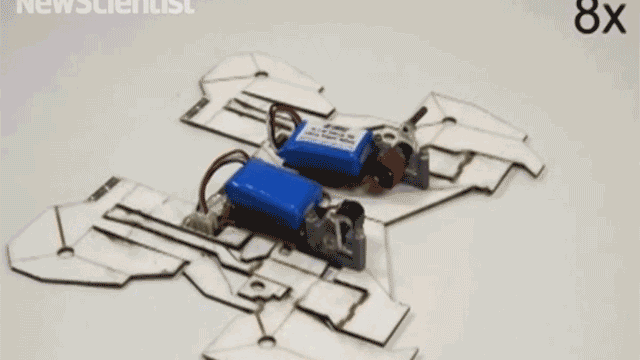The intricate folds of origami are infinitely useful across science, from designing safer airbags to building more resilient architecture. Here, though, the same principles are being applied to a self-assembling robot that uses a tiny microcontroller to transform itself from 2D to 3D, then walks away.
Harvard’s microrobotics engineers Sam Felton and Robert Wood were inspired by the concept of “rigid origami” — the same folding techniques as origami but made sturdier with structural-grade materials and hinges — in creating the autonomous transforming robot using a piece of computer-prompted smart plastic.
The “paper” in this case is a flexible circuit board with copper hinges that contract when heated. An electronic pulse from the microcircuit triggers the heat, and therefore the folding process — kind of like a Shrinky Dink — and modelling software can determine what preprogrammed design the robot will take (in this case, a cute crab). When the structural work is complete, an embedded motor takes over and allows the robot to become mobile. All this happens without any help from humans.
While this makes for an infinitely entertaining parlor trick, these flatpack robots could have some real-world value: Their slim profile and self-assembling skills make them perfect for squeezing into tight spaces for search-and-rescue missions. [New Scientist]
